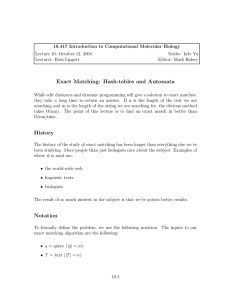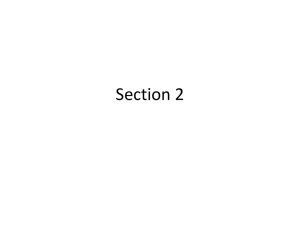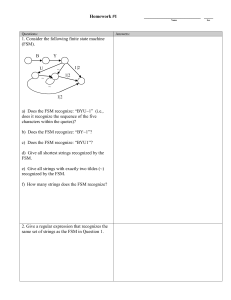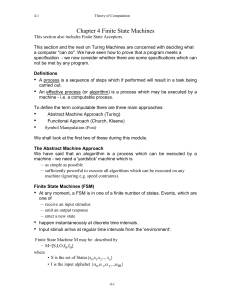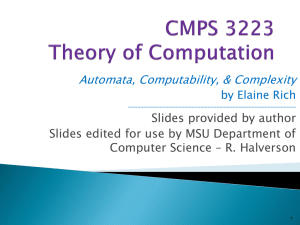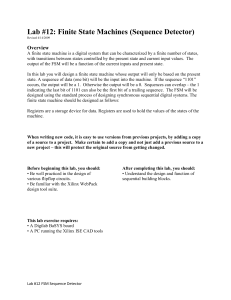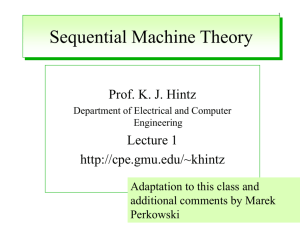Finite State Machines II
advertisement
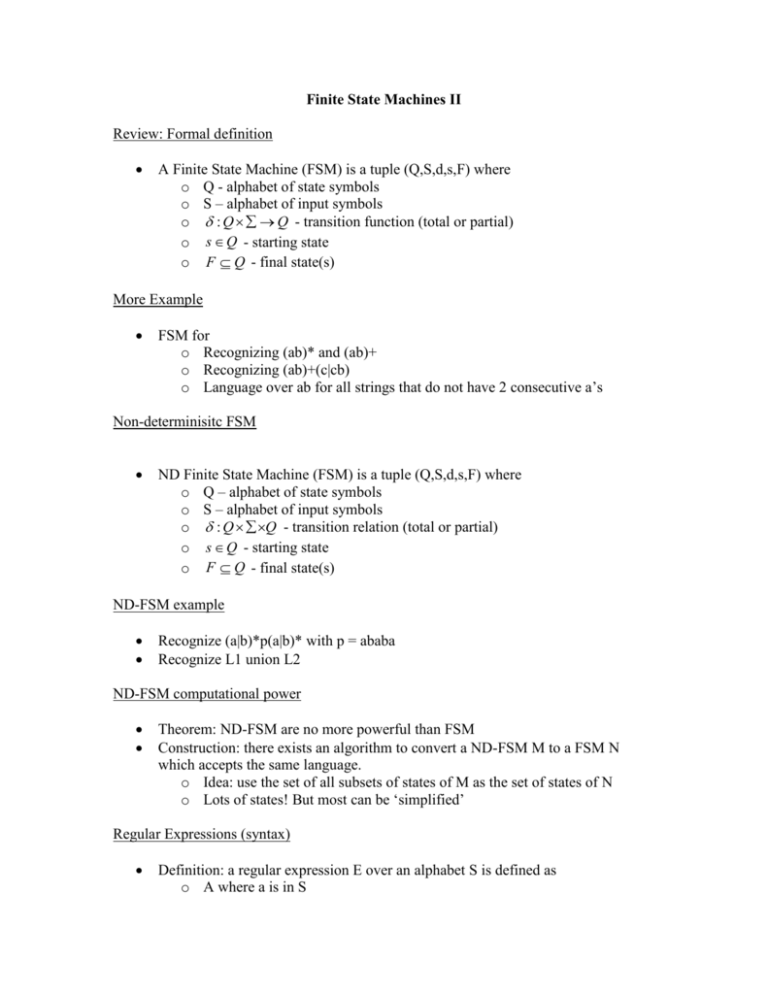
Finite State Machines II
Review: Formal definition
A Finite State Machine (FSM) is a tuple (Q,S,d,s,F) where
o Q - alphabet of state symbols
o S – alphabet of input symbols
o : Q Q - transition function (total or partial)
o s Q - starting state
o F Q - final state(s)
More Example
FSM for
o Recognizing (ab)* and (ab)+
o Recognizing (ab)+(c|cb)
o Language over ab for all strings that do not have 2 consecutive a’s
Non-determinisitc FSM
ND Finite State Machine (FSM) is a tuple (Q,S,d,s,F) where
o Q – alphabet of state symbols
o S – alphabet of input symbols
o : Q Q - transition relation (total or partial)
o s Q - starting state
o F Q - final state(s)
ND-FSM example
Recognize (a|b)*p(a|b)* with p = ababa
Recognize L1 union L2
ND-FSM computational power
Theorem: ND-FSM are no more powerful than FSM
Construction: there exists an algorithm to convert a ND-FSM M to a FSM N
which accepts the same language.
o Idea: use the set of all subsets of states of M as the set of states of N
o Lots of states! But most can be ‘simplified’
Regular Expressions (syntax)
Definition: a regular expression E over an alphabet S is defined as
o A where a is in S
o (F|G) where F and G are regular expressions
o (FG) where F and G are regular expressions
o F* where F is a regular expression
o F+ where F is a regular expression
() will be dropped if unambiguous
Examples of Res
(ab)*, (ab)+
(a|b)*ababa(a|b)*
Contrast: a*b* and (a|b)* and a*|b*
Some set operations
Define (and/or recall) the following set operations. Let F and G be sets of words
over an alphabet.
o F union G = {w| win F or win G}
o FG = {wz|ww in F and z in G} (conceatenation)
o F* = {} union F union FF union FFF. . .
o F+ = F union FF union FFF. . .
Languages defined by Res
Definition: Let E be a regualar expression over S. L(E) is defined as
o If E = a where a is in S, then L(E)={a}
o If E = {F|G} then L(E) = L(f) union L(G)
o If E = (FG) then L(E) = L(F)L(G)
o If E = F* then L(E) = L(F)*
o If E = F+ then L(E) = L(F)+
With the meaning for the set operations defined previously.
Operations on FSM
Given FSM M and N, it is possible to construct another FSMP which
‘implement’ the following operations:
o P st L(P) = L(M) union L(N)
o P st L(P) = L(M)L(N)
o P st L(P) = L(M)*
o P st L(P) = L(M)+
More operations
With some extra work, can show that we can also implement intersection and
complement.
These languages (defined either by Res or FSM) are called regular languages.
Things that are not regular
a b
Palindromes
j
j
| j 0 is not regular
If time permits
Pumping Lemma




